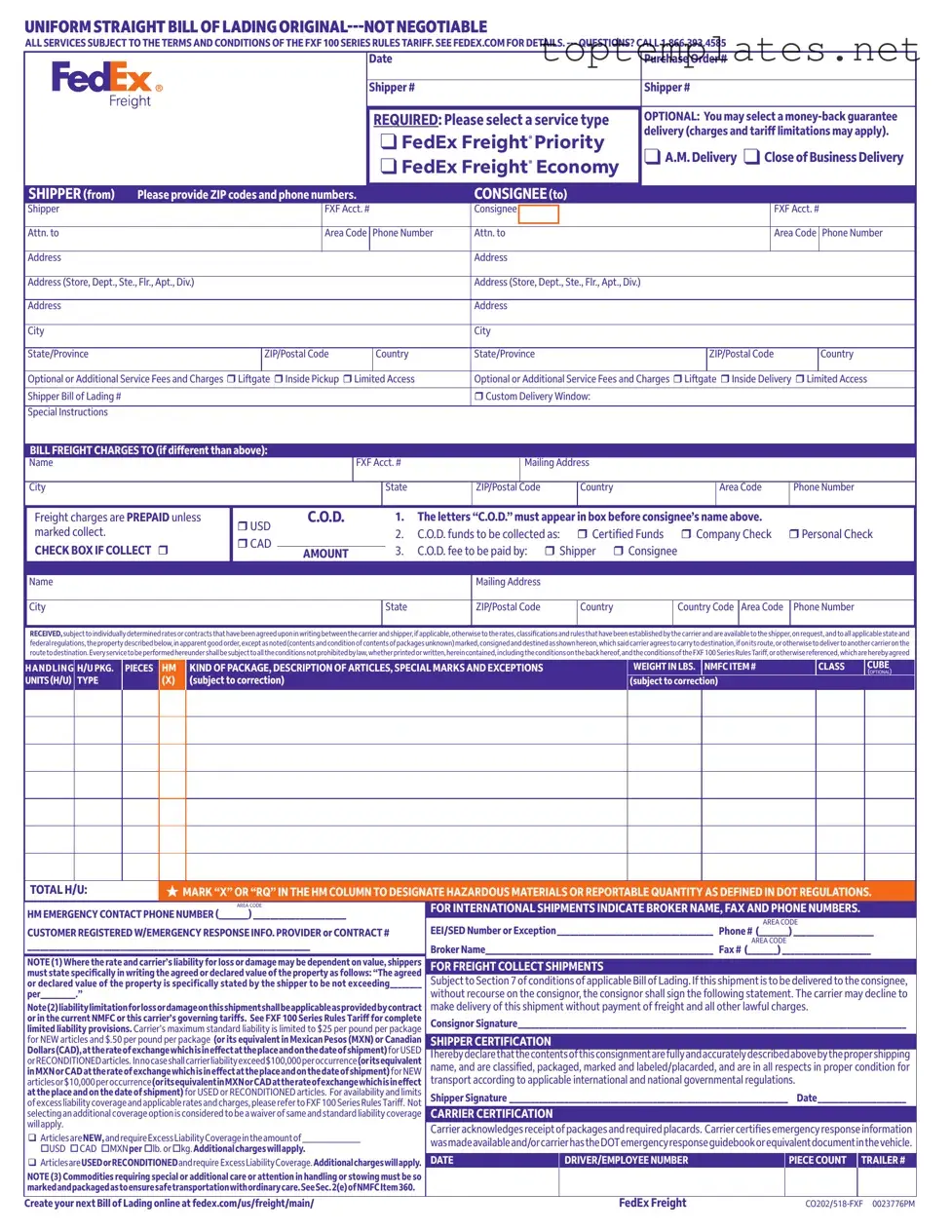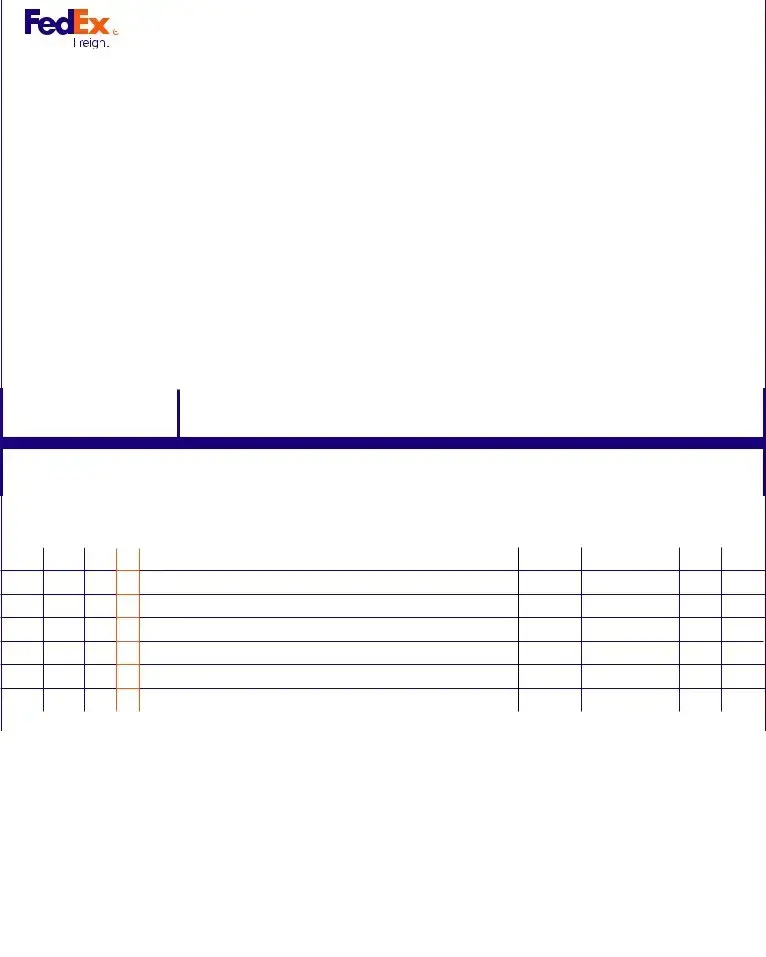What is a FedEx Bill of Lading?
A FedEx Bill of Lading is a legal document issued by FedEx that outlines the details of a shipment being transported. It includes information such as the shipper's and consignee's addresses, details about the shipped items, the type of service selected, and the terms and conditions of the shipment. It serves as a receipt, a contract, and a document of title.
What information is required to complete the FedEx Bill of Lading?
To complete the FedEx Bill of Lading, you must provide the date of shipment, Purchase Order number, Shipper number, and select a service type. Information about both the shipper and consignee, including addresses and phone numbers, is necessary. You also need to specify the shipper's FedEx Freight Account Number, the Bill of Lading number, details of the shipment (including weight, description, and packaging), and information regarding hazardous materials if applicable.
Can I specify the value of my shipment on the FedEx Bill of Lading?
Yes, you can specify the value of your shipment on the FedEx Bill of Lading. This is important for determining the carrier’s liability for loss or damage. The value needs to be explicitly stated in the document to ensure adequate coverage.
What are the options for freight charges on a FedEx Bill of Lading?
On a FedEx Bill of Lading, freight charges can be marked as prepaid, collect, or C.O.D. (Cash On Delivery). The shipper needs to select the desired option and, if C.O.D. is chosen, specify the amount, the type of funds to be collected, and who will be responsible for the C.O.D. fee.
How does the FedEx Bill of Lading address hazardous materials?
For shipments containing hazardous materials, the FedEx Bill of Lading requires an indication in the designated column (HM). It must include the type of hazardous material, an emergency contact phone number, and any other relevant shipping information as defined by DOT regulations.
What is the significance of the Shipper Certification on the FedEx Bill of Lading?
The Shipper Certification on the FedEx Bill of Lading is a declaration by the shipper that the contents of the shipment are fully and accurately described, properly classified, packaged, marked, and labeled in accordance with all applicable regulations. It ensures that the shipment is prepared in a manner that is safe for transport.
Is it possible to request additional liability coverage for a shipment?
Yes, you can request additional liability coverage for a shipment through the FedEx Bill of Lading. This is done by selecting the Excess Liability Coverage option and specifying the coverage amount. It is important to note that additional charges will apply depending on the coverage amount and the nature of the goods shipped.
What should be done if a shipment requires special handling?
If a shipment requires special handling, it must be clearly marked and packaged accordingly to ensure safe transportation. Details of the special handling required should be provided in the Special Instructions section of the FedEx Bill of Lading.
Can the Bill of Lading be used for international shipments?
Yes, the FedEx Bill of Lading can be used for international shipments. It requires additional information for international transportation, including the Broker Name, phone, and fax numbers, as well as an EEI/SED Number or Exception. This information ensures compliance with international shipping regulations.
How can I create my next Bill of Lading?
You can create your next Bill of Lading online at FedEx's official website. This service simplifies the process, ensuring you can quickly and accurately fill out the necessary documentation for your freight shipments.

